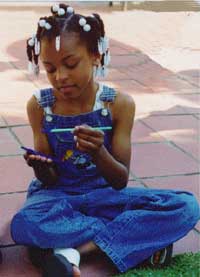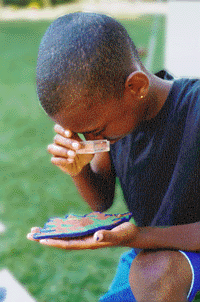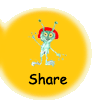
Make a
Relief Map Jigsaw Puzzle
of the World
 Wouldn't it be fun to make your own miniature world, complete with mountains, valleys, rivers, lakes, and volcanoes? Now what does map-making have to do with space? Excellent question! Well, where would you have to go for the real world to look like a map? More on that later. Meanwhile . . . Cut the continents and oceans out of clay or dough, then add the details. Here's how. Suggestion: Find a grown-up to share this activity with you What you need:
|


 If
you have a magnifying glass, look at your
topographical features through it and see how
interesting they are!
If
you have a magnifying glass, look at your
topographical features through it and see how
interesting they are!




